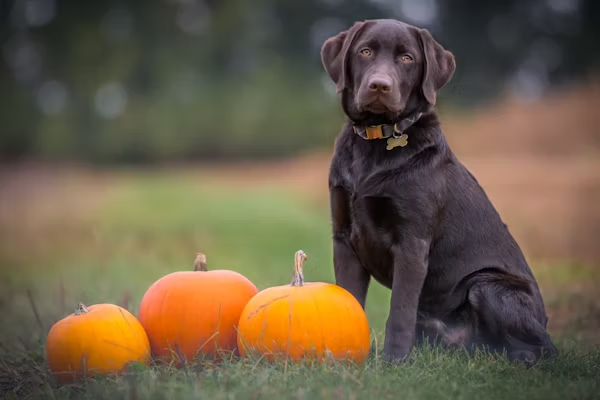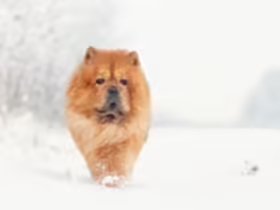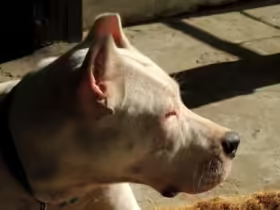Halloween is a fun and exciting time for many, but it can be stressful and dangerous for our furry friends. Between the constant doorbell ringing, unusual costumes, and the abundance of candy, Halloween presents several potential risks for both dogs and cats. As responsible pet owners, it’s essential to prepare and take precautions to ensure our pets’ safety and well-being.
In this blog, we’ll explore key strategies for keeping your dog or cat safe during Halloween. From avoiding toxic treats to creating a calm environment, follow these tips for a safe and fun celebration.
1. Keep Pets Away from Halloween Candy
- Toxicity of Chocolate: Chocolate contains theobromine, which is toxic to dogs and cats. Even small amounts of chocolate can cause symptoms like vomiting, diarrhea, seizures, or even death in severe cases. Dark chocolate and baking chocolate are especially dangerous.
- Candy with Xylitol: Many sugar-free candies and gums contain xylitol, an artificial sweetener that can lead to insulin release, causing hypoglycemia (low blood sugar), liver failure, or death in pets.
- Raisins and Grapes: Found in some Halloween treats, raisins and grapes are highly toxic to dogs and cats and can cause kidney failure.
- Action Steps:
- Keep all Halloween candy out of reach of pets.
- Educate children and guests not to feed candy to pets.
- If your pet consumes candy, contact a veterinarian immediately.
2. Avoid Dangerous Halloween Decorations
- Electrical Cords and Lights: Pets, especially curious kittens and puppies, may chew on electrical cords, leading to shocks or burns. Twinkling lights and decorations that flash can also be disorienting for pets.
- Open Flames from Jack-O’-Lanterns: Cats are notorious for being attracted to candles, and curious pets can easily knock over lit pumpkins, causing fires or burns.
- Fake Spider Webs and Strings: These are common Halloween decorations that can pose a choking hazard or cause intestinal blockages if swallowed by a pet.
- Glow Sticks and Glow Jewelry: While glow sticks are non-toxic, they can cause pets to drool, vomit, or act irritated if chewed. The liquid inside tastes bitter, which can cause excessive drooling or discomfort.
- Action Steps:
- Opt for battery-operated candles inside pumpkins instead of real flames.
- Keep decorations like fake spider webs and stringed lights out of your pet’s reach.
- Secure electrical cords with cord protectors or tuck them away.
3. Create a Calm and Quiet Space for Your Pet
- Frequent Doorbell Rings: The constant ringing of the doorbell or knocking can cause anxiety and stress in dogs and cats, especially if they are territorial or anxious by nature.
- Strangers in Costumes: Pets may be confused or frightened by the presence of people in costumes, which can lead to defensive behaviors like barking, hissing, or even biting.
- Overstimulation: With the noise, flashing lights, and increased foot traffic, Halloween can easily overstimulate pets, leading to stress or unpredictable behaviors.
- Action Steps:
- Designate a quiet room away from the front door where your pet can retreat during trick-or-treat hours.
- Play calming music or use a white noise machine to drown out the sound of the doorbell.
- Consider using anxiety-relief products like pheromone sprays, calming treats, or anxiety vests.
4. Be Mindful of Pet Costumes
- Comfort and Fit: While dressing your pet in a costume can be fun, not all pets enjoy it. Ill-fitting costumes can restrict movement, cause discomfort, or lead to overheating.
- Potential Hazards: Costumes with small accessories, strings, or buttons can be choking hazards if chewed or swallowed. Tight costumes can also interfere with breathing, walking, or bathroom needs.
- Body Language: Pay attention to your pet’s body language. Signs of discomfort or stress include flattening ears, excessive panting, licking lips, or trying to remove the costume.
- Action Steps:
- Choose a simple, non-restrictive costume made from breathable materials.
- Always supervise your pet when they are in costume to prevent accidents.
- If your pet shows any signs of distress, remove the costume immediately.
5. Identification and Microchipping
- Increased Risk of Escapes: With doors frequently opening for trick-or-treaters, there’s a higher risk that pets could slip out unnoticed. Dogs and cats may also be spooked by costumes, noises, or strangers, causing them to bolt.
- Importance of ID Tags: Ensure your pet is wearing a collar with up-to-date identification tags, including your phone number and address, in case they escape.
- Microchipping: Microchipping your pet is an extra layer of protection. If your pet runs away and is found without a collar, shelters and veterinarians can scan for a microchip and contact you.
- Action Steps:
- Keep your pet indoors during Halloween night and ensure windows and doors are securely closed.
- Double-check that your pet’s ID tags are current.
- If your pet is not microchipped, consider getting it done before the holiday.
6. Supervised Outdoor Time
- Pranks and Dangers to Outdoor Pets: Sadly, Halloween can bring out pranksters, and outdoor pets, especially black cats, are at greater risk of harm. Halloween myths about black cats can lead to superstitious acts of cruelty.
- Poisonous Plants and Decorations: Some Halloween plants, like pumpkins and corn, are safe in small amounts but can cause upset stomachs if ingested in large quantities. Avoid leaving carved pumpkins or gourds where pets can reach them.
- Action Steps:
- Keep pets indoors during Halloween to avoid pranks or accidental harm.
- If your pet must be outside, ensure they are supervised and stay close to home.
- Monitor pets closely if you decorate your yard with plants or pumpkins.
7. Monitor Guests and Visitors
- Guests’ Behavior: Even well-meaning guests or trick-or-treaters may accidentally scare or overwhelm your pet. Children in costumes may not know how to interact with animals, leading to accidental scares or aggressive responses from the pet.
- Pet-Friendly Parties: If you’re hosting a Halloween party, make sure your pet has a safe space to retreat to. Not all pets enjoy large gatherings or the noise and chaos that can come with them.
- Action Steps:
- Keep interactions between guests and pets supervised.
- Educate guests on how to approach and interact with your pet, especially children.
- Consider keeping your pet in a designated quiet room if the party or gathering gets too overwhelming.
8. Post-Halloween Cleanup
- Leftover Candy and Decorations: After the fun is over, make sure to do a thorough cleanup of any candy wrappers, decorations, or costume accessories that may have fallen on the floor. Pets are curious and may try to eat leftover candy or decorations, which could lead to digestive issues or obstructions.
- Pumpkins and Gourds: If you’ve used pumpkins, gourds, or other Halloween decorations, dispose of them properly. While small amounts of pumpkin can be safe for pets, large amounts can cause gastrointestinal issues.
- Action Steps:
- Do a thorough sweep of your home and yard for any leftover hazards.
- Dispose of any leftover candy, wrappers, or hazardous decorations properly.
- Check your pet for signs of distress, such as vomiting or lethargy, if you suspect they ingested something they shouldn’t have.
Conclusion
Halloween can be an exciting and fun holiday for the whole family, but it’s important to take the necessary precautions to ensure your dog or cat stays safe. By following these tips—keeping dangerous candy out of reach, creating a calm space, avoiding hazardous decorations, and supervising your pet’s costume—you can enjoy a stress-free Halloween. Always keep your pet’s safety as a top priority, and when in doubt, consult your veterinarian if you suspect your pet has ingested something harmful.











Leave a Reply